SEO
Inside The Decentralized Social Media Platform

Are you interested in the new social media platform aiming to compete with Twitter?
Bluesky is a decentralized social network led by CEO Jay Graber, with Twitter co-founder Jack Dorsey on its board of directors.
What Is Bluesky?
In December 2019, Dorsey announced through a series of tweets that Twitter would fund a small independent team of up to five people to develop an open and decentralized standard for social media.
The aim was for Twitter to become a client of this standard one day.
Dorsey highlighted several factors prompting this move:
- The challenges posed by centralized control include difficulties in global policy enforcement to address abuse and misinformation.
- The shifting value of social media from content hosting and removal to recommendation algorithms. These algorithms, which currently are typically proprietary, direct users’ attention. Dorsey hopes Bluesky would allow for alternatives to be built.
- Existing incentives in social media often draw attention to controversial and outrageous content instead of promoting informative and healthy conversations.
- Recent technological advances, like blockchain, have made decentralized solutions more viable. These solutions could lead to open and durable hosting, governance, and monetization.
We’re calling this team @bluesky. Our CTO @ParagA will be running point to find a lead, who will then hire and direct the rest of the team. Please follow or DM @bluesky if you’re interested in learning more or joining! 🌐💬💙
— jack (@jack) December 11, 2019
Bluesky strives to make social networks function similarly to email, blogs, or phone numbers as open systems that facilitate online interactions.
Bluesky developers created the AT Protocol, which is nearing completion. The AT Protocol aims to make modern social media and online public conversations more akin to the early Internet era when anyone could create a blog or use RSS to follow multiple blogs.
The Bluesky app demonstrates the features of this protocol.
Bluesky hopes this will lead to new advancements in social media, enabling researchers and communities to solve issues currently faced by social networks, as tweeted by Dorsey.
Social Media Problems Bluesky Hopes To Solve
Most traditional social networks are closed platforms controlled by a central authority that dictates user and developer permissions.
If a user decides to leave a traditional social network, they must begin anew, losing their connections and content. For developers, creating a new app requires overcoming network effects and rebuilding the social graph from the beginning.
Additionally, they risk being shut down abruptly if they try to build using these companies’ APIs.
Similarly, content creators may lose their audience if the platform changes its rules.
The AT Protocol is designed to change this scenario, offering a more open, democratic, and innovative environment for users, developers, and content creators.
How To Get A Bluesky Invite Code
There are several ways to get an invitation to Bluesky.
You can sign up for the waitlist and wait for an invitation to join from Bluesky.
You can ask your friends on other social networks if they have an invite.
You can search Bluesky invite code on Twitter. Check the latest results and reply quickly to get an invite. (This is the method that worked for me.)
 Screenshot from Twitter, May 2023
Screenshot from Twitter, May 2023You can even buy an invite code for Bluesky on eBay.
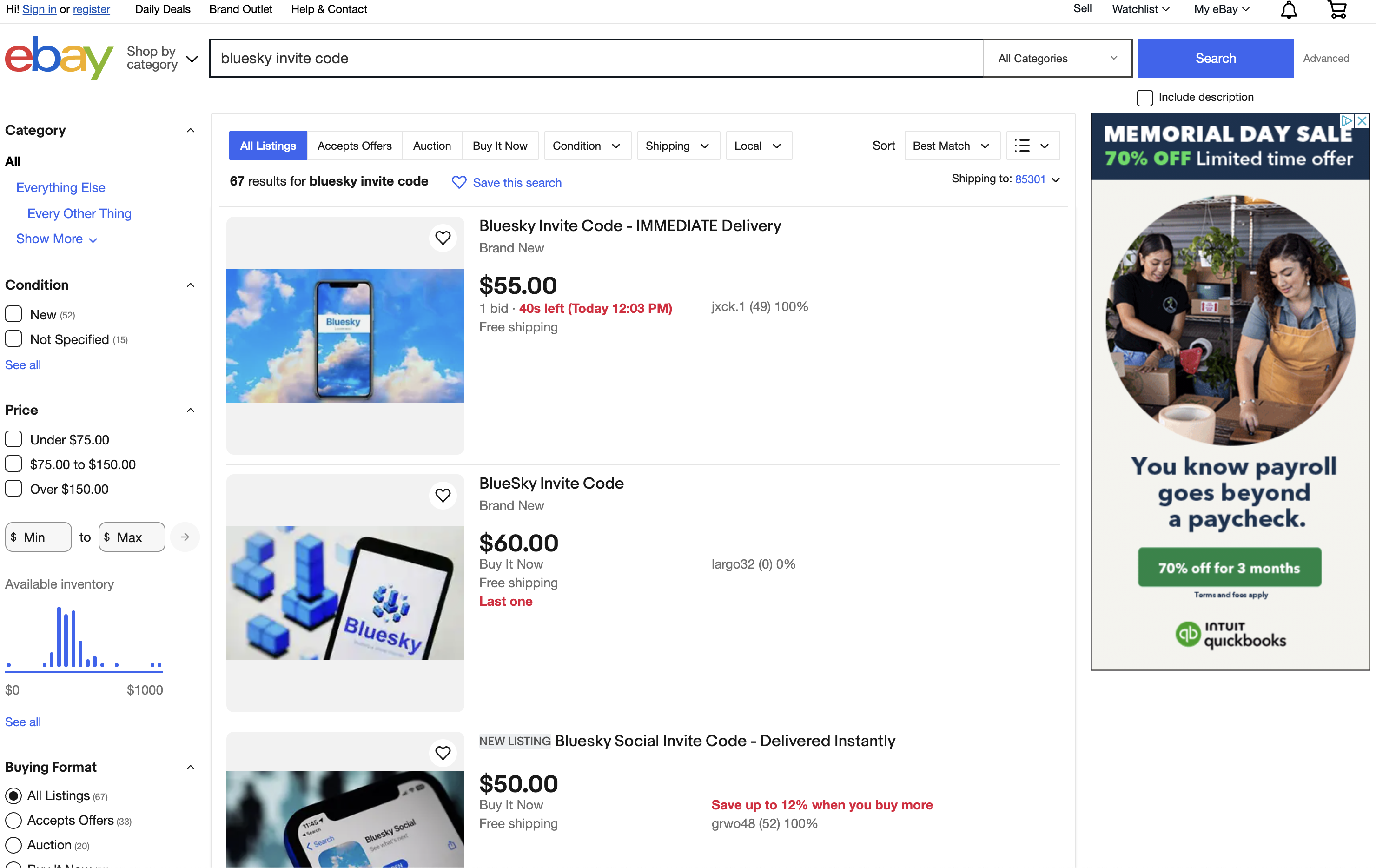 Screenshot from eBay, May 2023
Screenshot from eBay, May 2023How To Create Your Bluesky Account
Once you have your invitation code, you can create your account on the website or the Bluesky app from the App Store or Google Play.
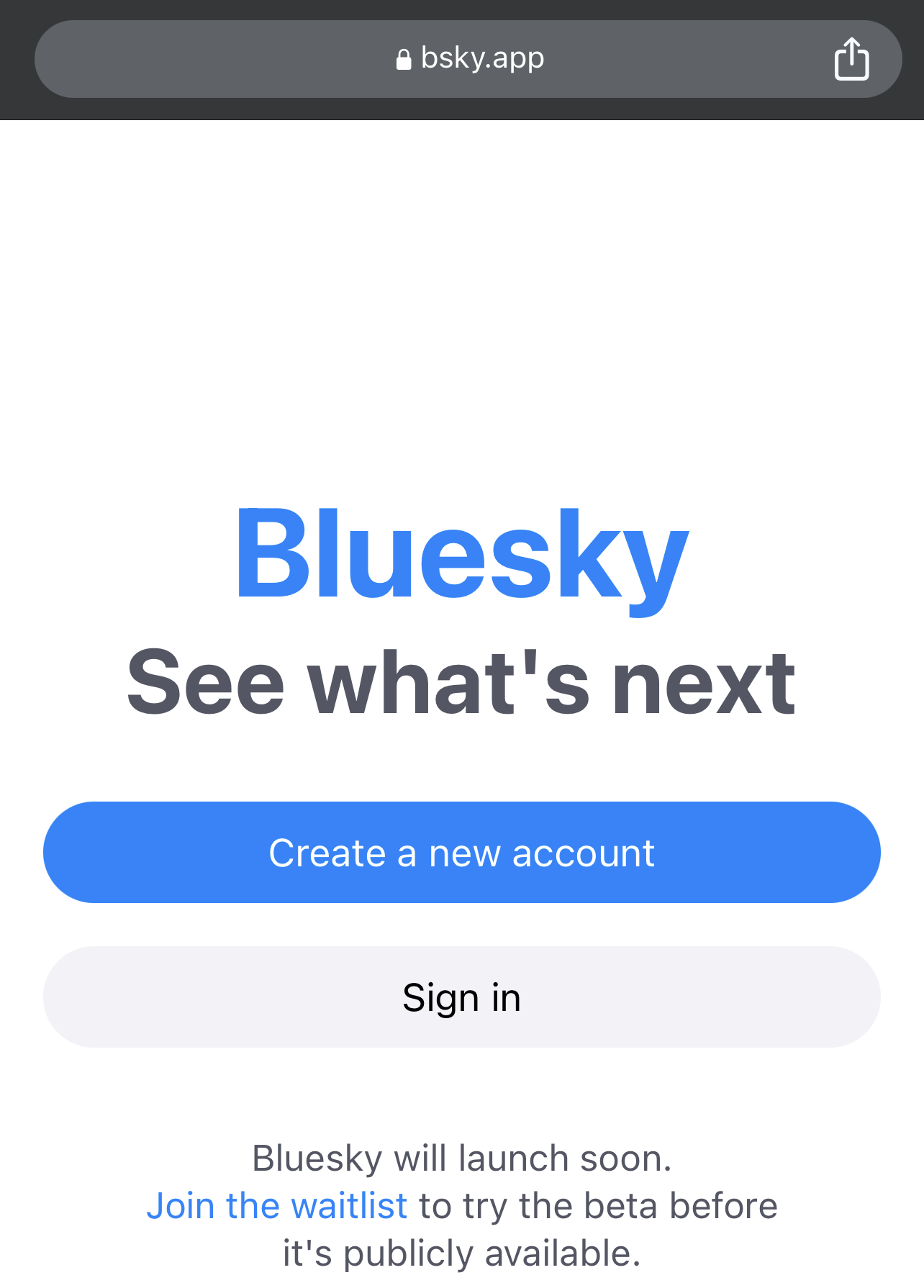 Screenshot from Bluesky, May 2023
Screenshot from Bluesky, May 2023You can choose the default Bluesky server ([email protected]) or follow these directions to use your own domain ([email protected]). You can change to your own domain later in your account settings.
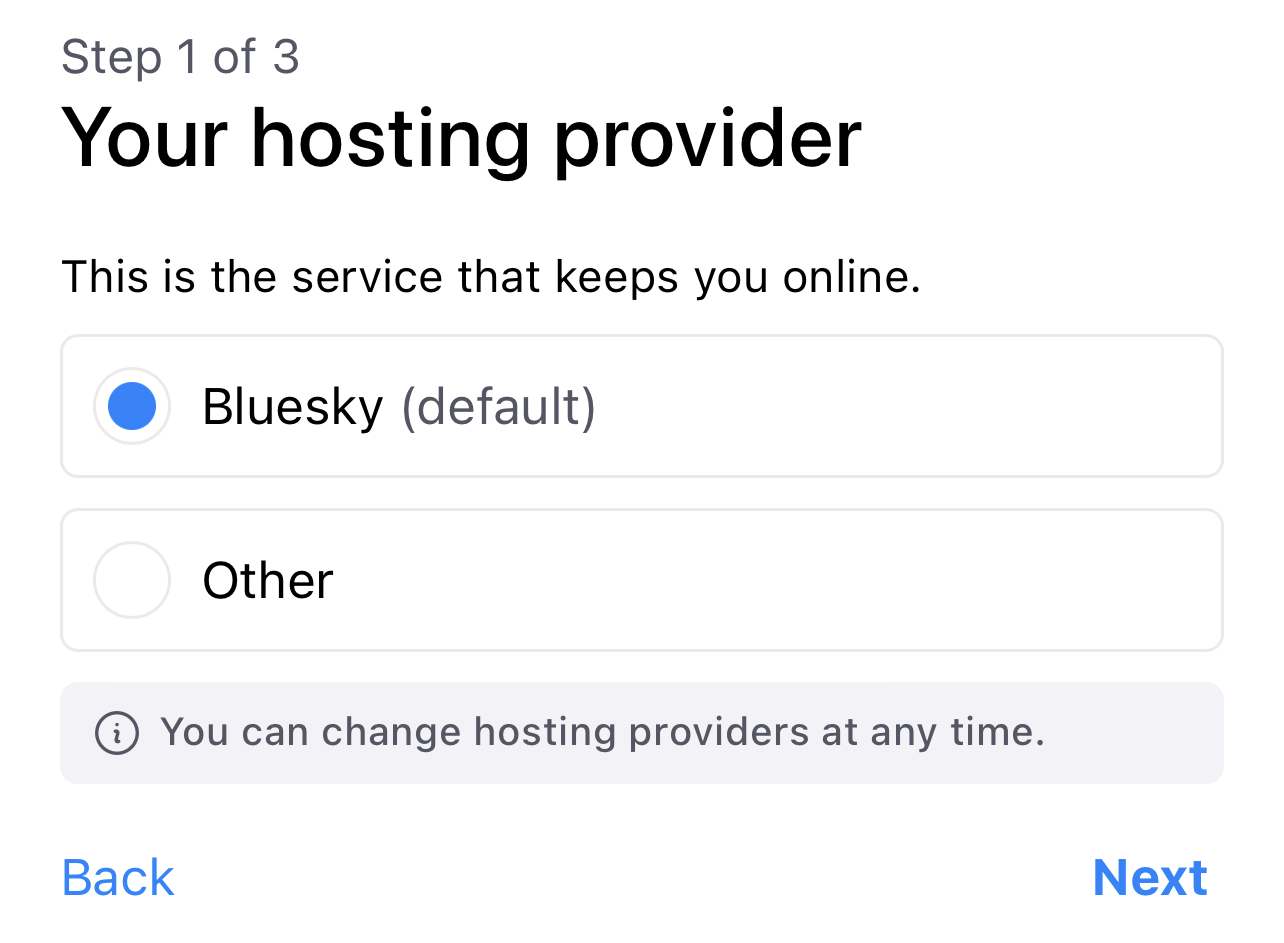 Screenshot from Bluesky, May 2023
Screenshot from Bluesky, May 2023Next, enter your invite code, email, password, and birthdate.
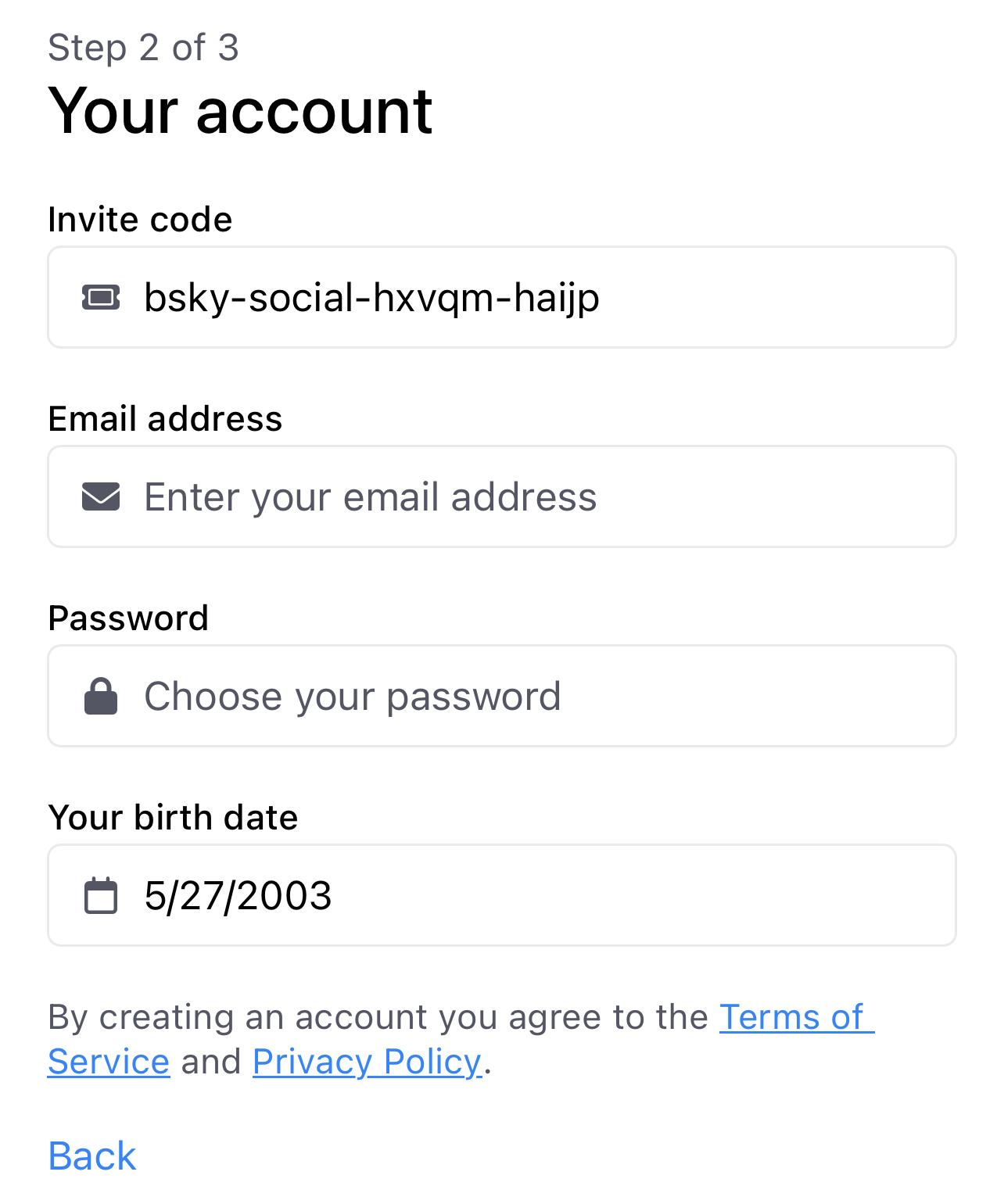 Screenshot from Bluesky, May 2023
Screenshot from Bluesky, May 2023Finally, choose a user handle. You can change this later in your account settings.
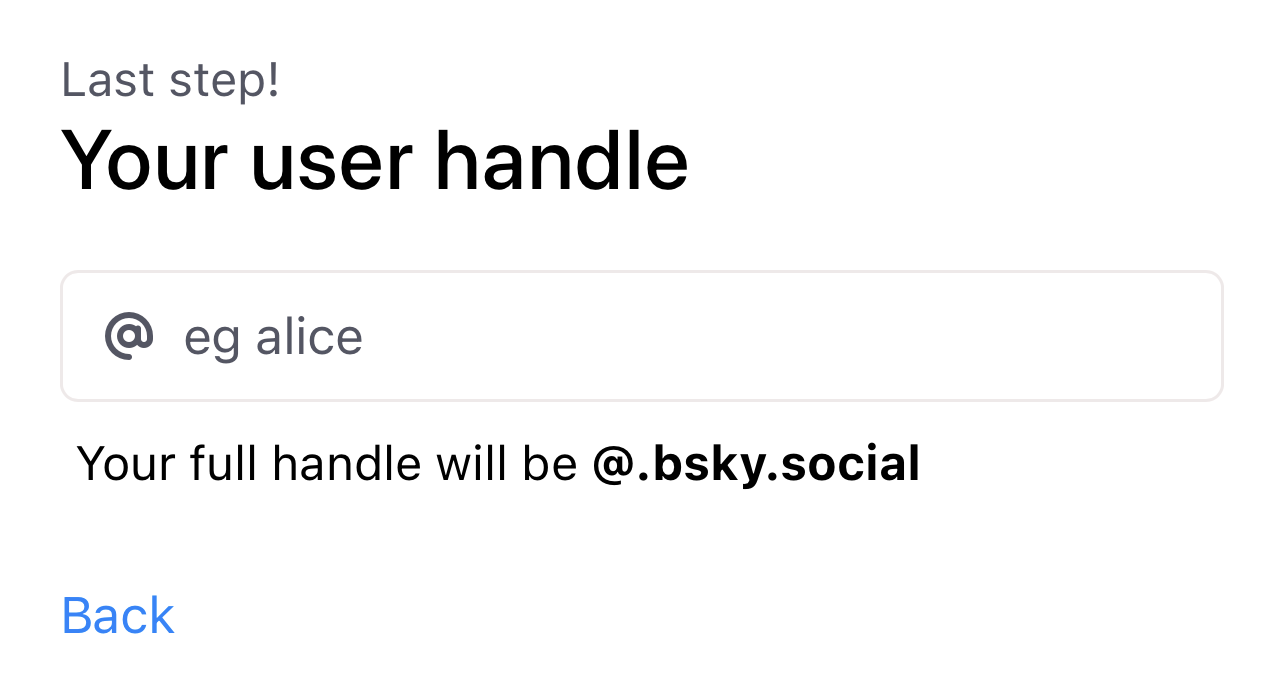 Screenshot from Bluesky, May 2023
Screenshot from Bluesky, May 2023How To Edit Your Bluesky Profile
Once you’ve completed your account setup, you will want to visit your profile and edit it before connecting with others.
You can add a cover photo, profile photo, display name, and 256-character description.
 Screenshot from Bluesky, May 2023
Screenshot from Bluesky, May 2023While there is no specific field for links to your website or other social profiles, you can place a link in the description.
How To Post An Update On Bluesky
Bluesky allows you to post 300-character updates with text, up to four images, and links.
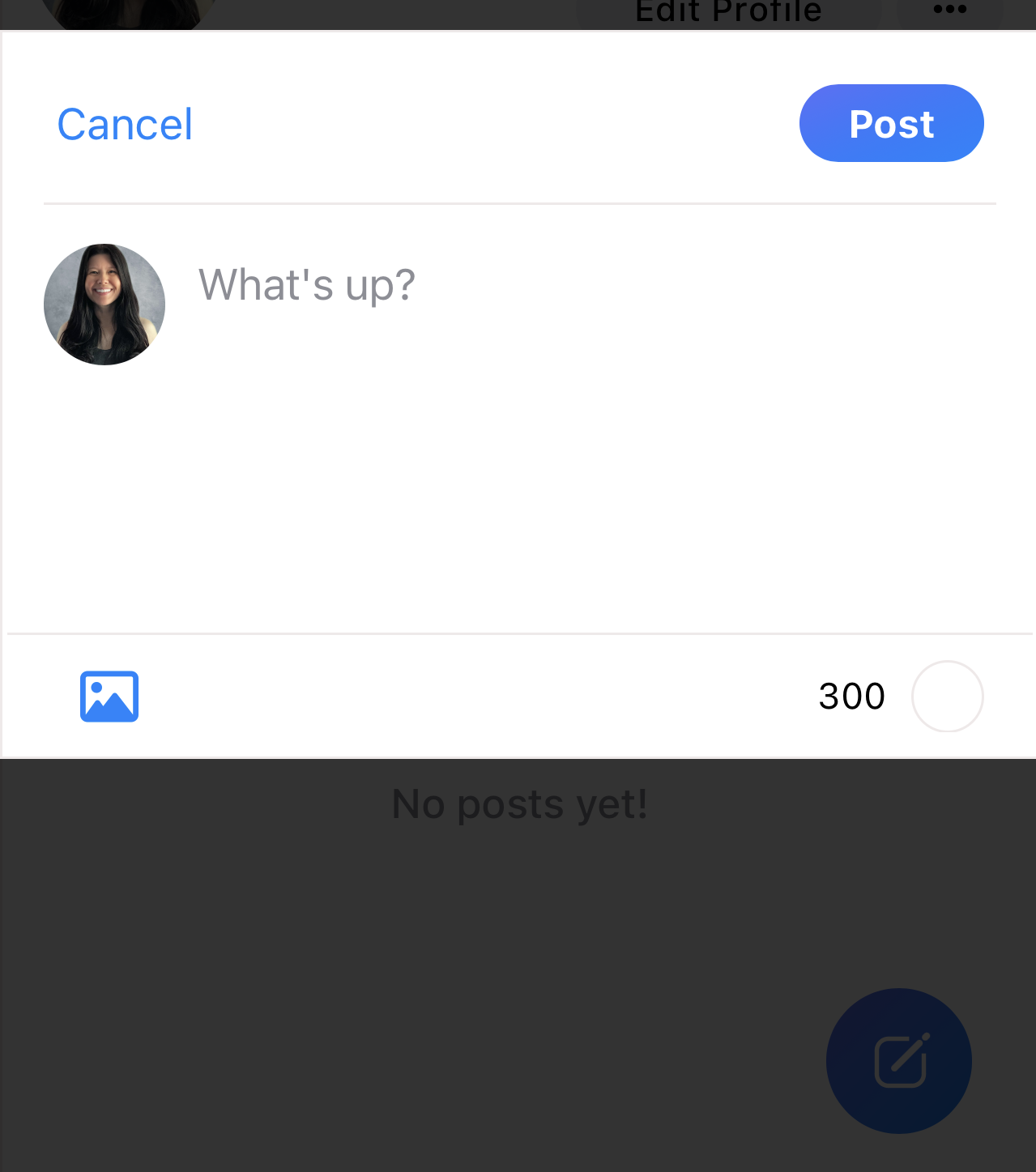 Screenshot from Bluesky, May 2023
Screenshot from Bluesky, May 2023Note that all profiles and posts are public, and the user content you share is subject to Bluesky’s Terms of Service.
Within the Terms of Service, Bluesky notes that when you share any content (such as text, images, or videos) on a platform or service provided by Bluesky, you give Bluesky and its related companies the right to use and share that content.
With these terms, Bluesky can use, copy, modify, distribute, and display your content in various ways, including promoting Bluesky and its services through social media channels.
I’m going to try to clarify here. First of all, Jack is 1 of 3 board members of Bluesky, and does not have any personal license to any content.
The “rights to user-generated content” term lets us do stuff like this — use screenshots of user-generated content in the app store. pic.twitter.com/yp4SOgJfBS
— Jay Graber (@arcalinea) April 28, 2023
They can do this without paying you. On the upside, they won’t use your content in any sponsored content without your permission.
How To Build Your Bluesky Network
To find people to connect with, use the search to find posts and users with specific keywords.
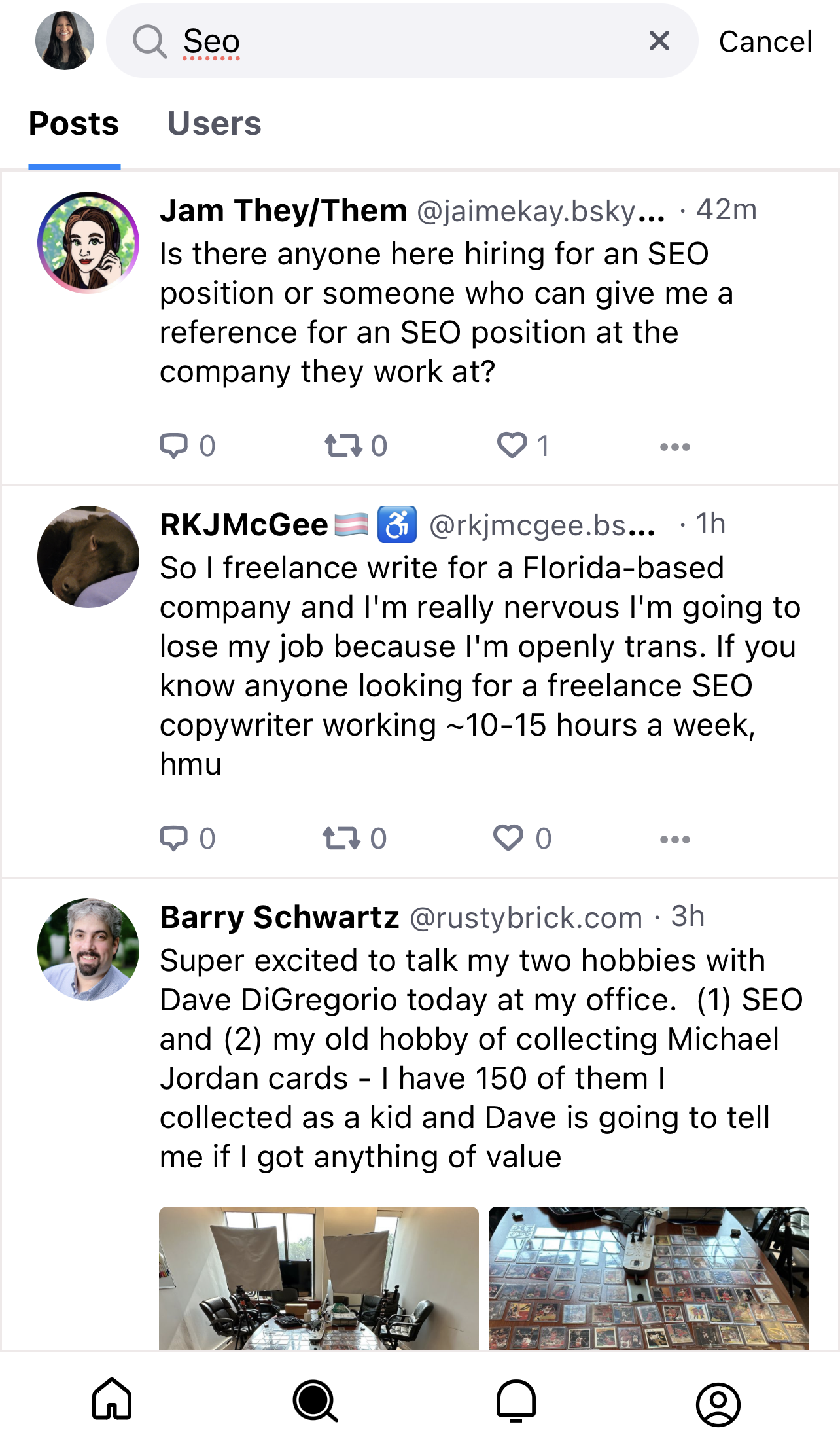 Screenshot from Bluesky, May 2023
Screenshot from Bluesky, May 2023You can reply to, repost, and like posts by other users. The three dots offer additional options, including translating and sharing with other networks.
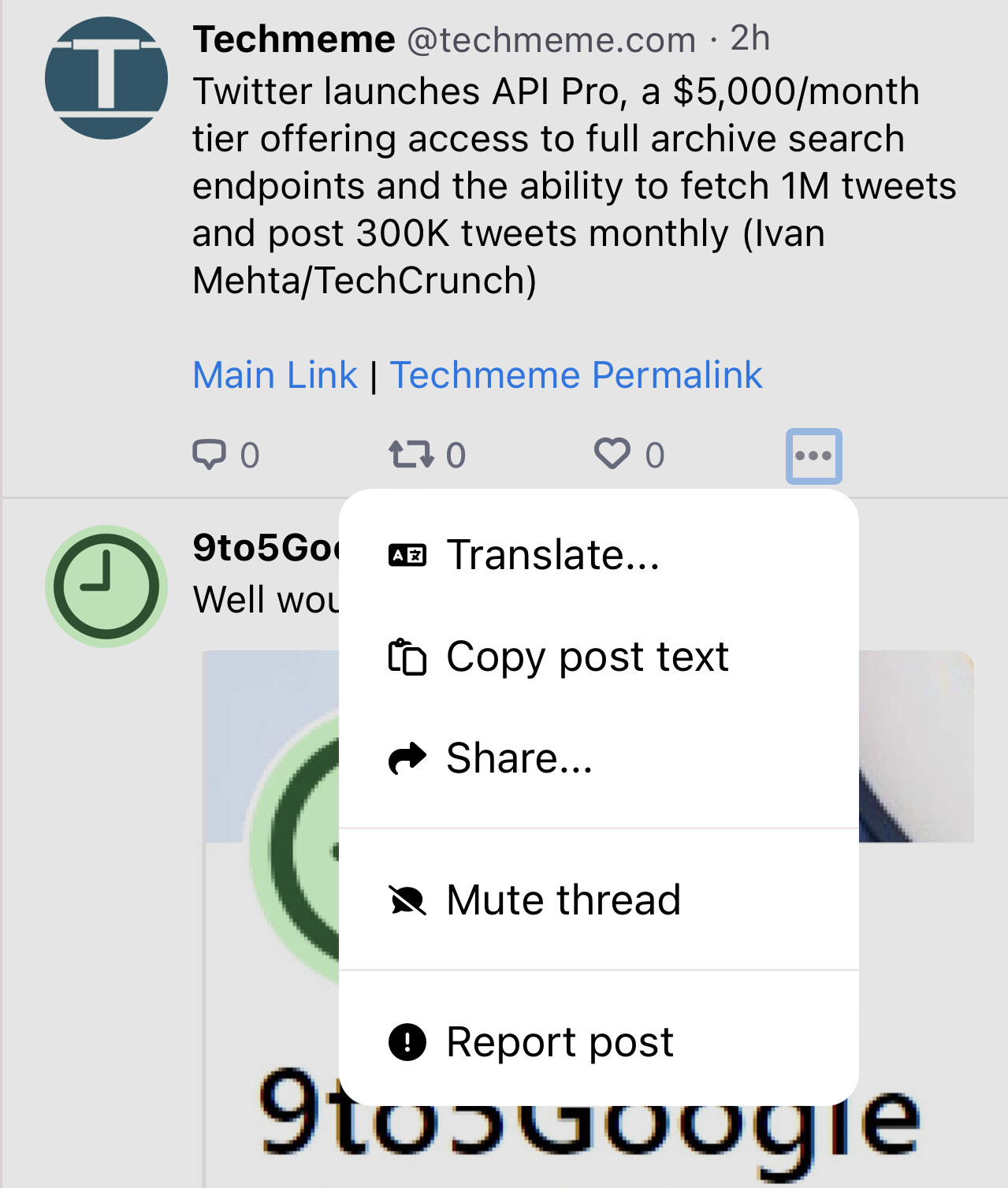 Screenshot from Bluesky, May 2023
Screenshot from Bluesky, May 2023Switch to the Users tab to find related accounts to follow.
 Screenshot from Bluesky, May 2023
Screenshot from Bluesky, May 2023When you visit another user’s profile, you can follow them or use the three dots to find more options, including one to add the user to a list.
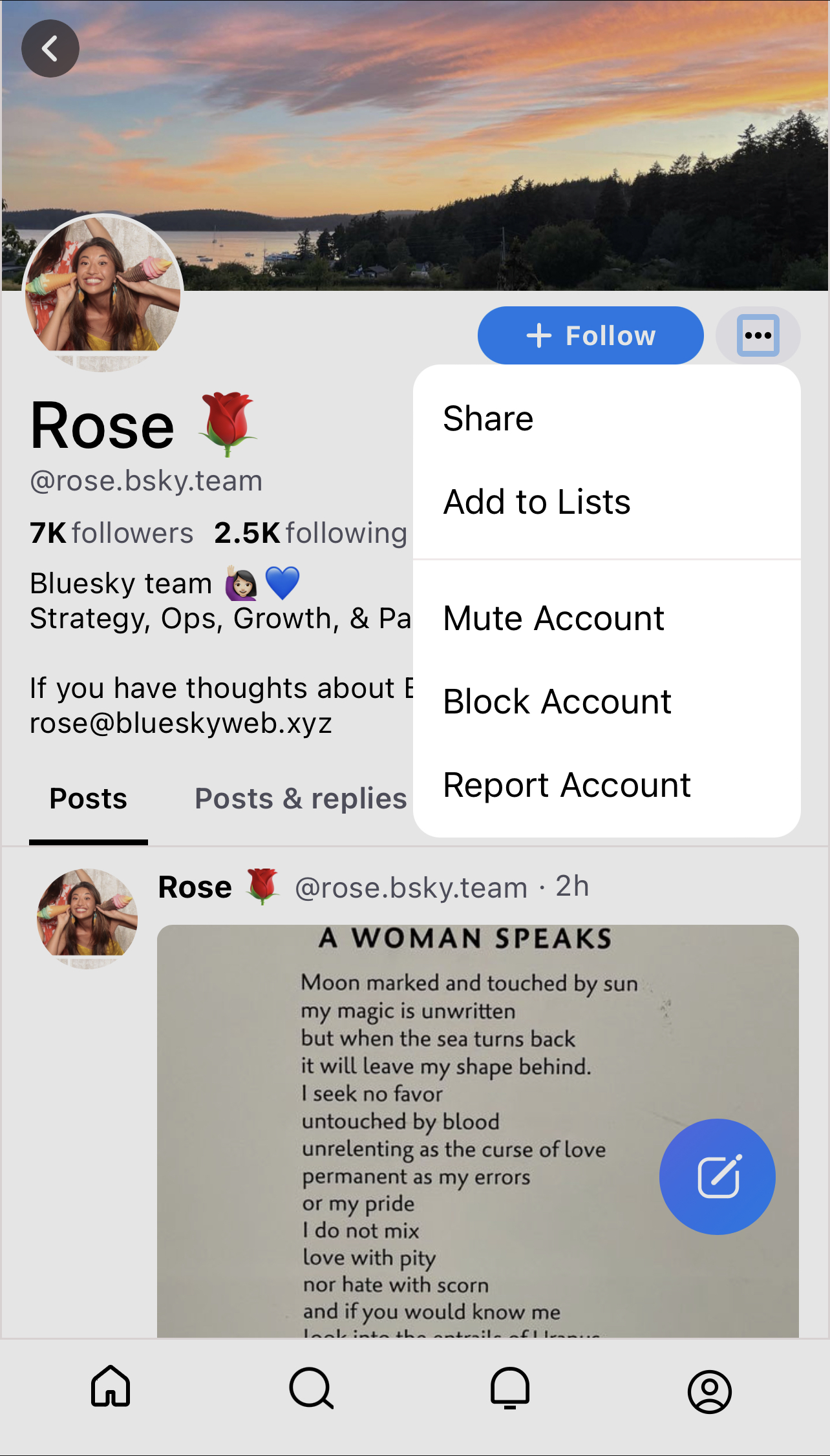 Screenshot from Bluesky, May 2023
Screenshot from Bluesky, May 2023Bluesky Lists Vs. Twitter Lists
It’s essential to note Bluesky lists are not like Twitter lists.
 Screenshot from Bluesky, May 2023
Screenshot from Bluesky, May 2023On Twitter, you add users to lists when you want to follow them more closely.
On Bluesky, you add users to lists to mute their activity.
 Screenshot from Bluesky, May 2023
Screenshot from Bluesky, May 2023When you create a Bluesky mute list, it will be visible on your profile. You can, however, follow other users’ mute lists to ignore the same group of users privately.
In addition to public mute lists, you can access more ways to moderate the content you see on Bluesky in the Moderation section.
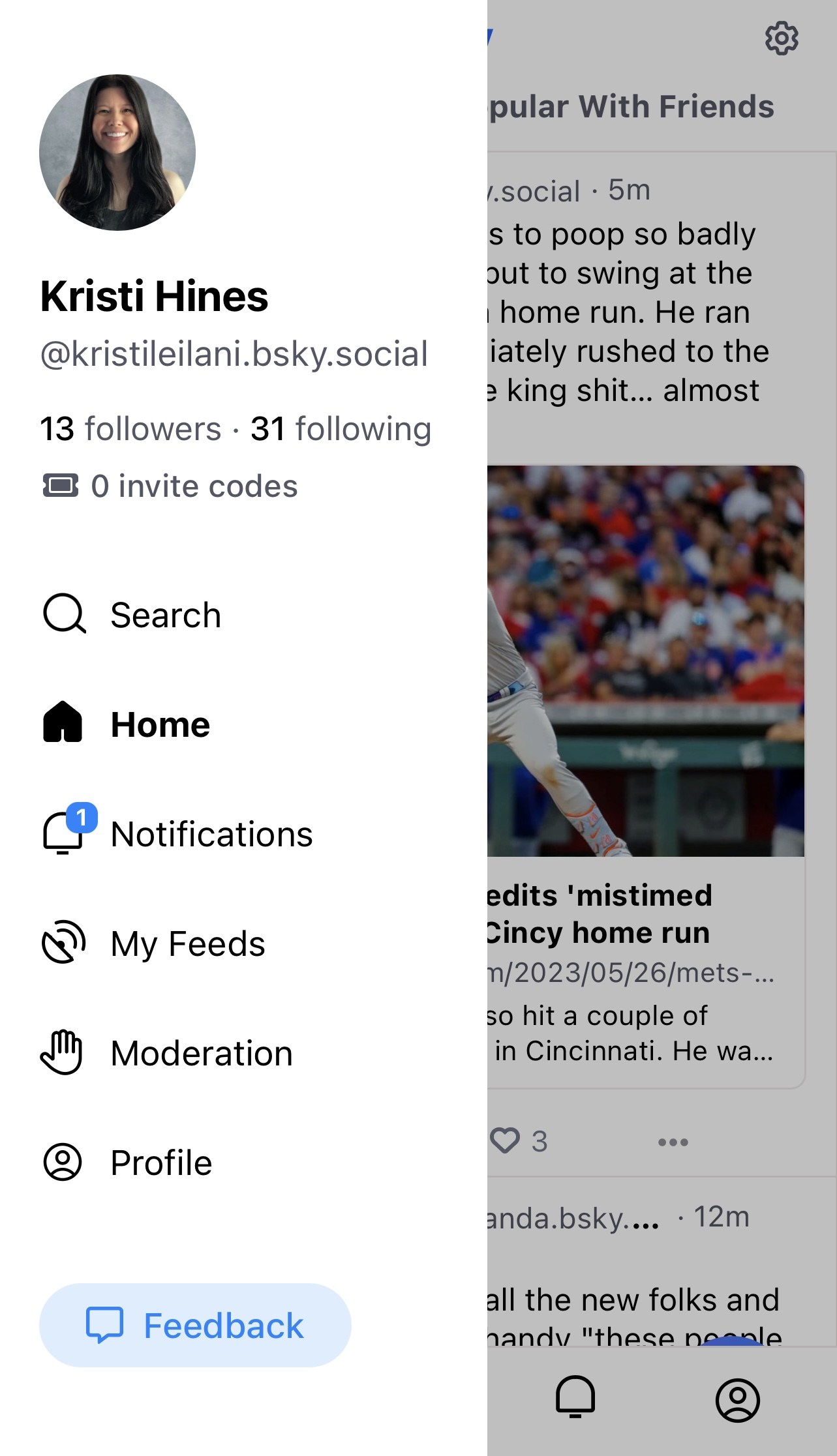 Screenshot from Bluesky, May 2023
Screenshot from Bluesky, May 2023Here, you can update your content filtering settings, mute an account, or block an account.
 Screenshot from Bluesky, May 2023
Screenshot from Bluesky, May 2023My Feeds
My Feeds allows users to create custom algorithms for displaying content.
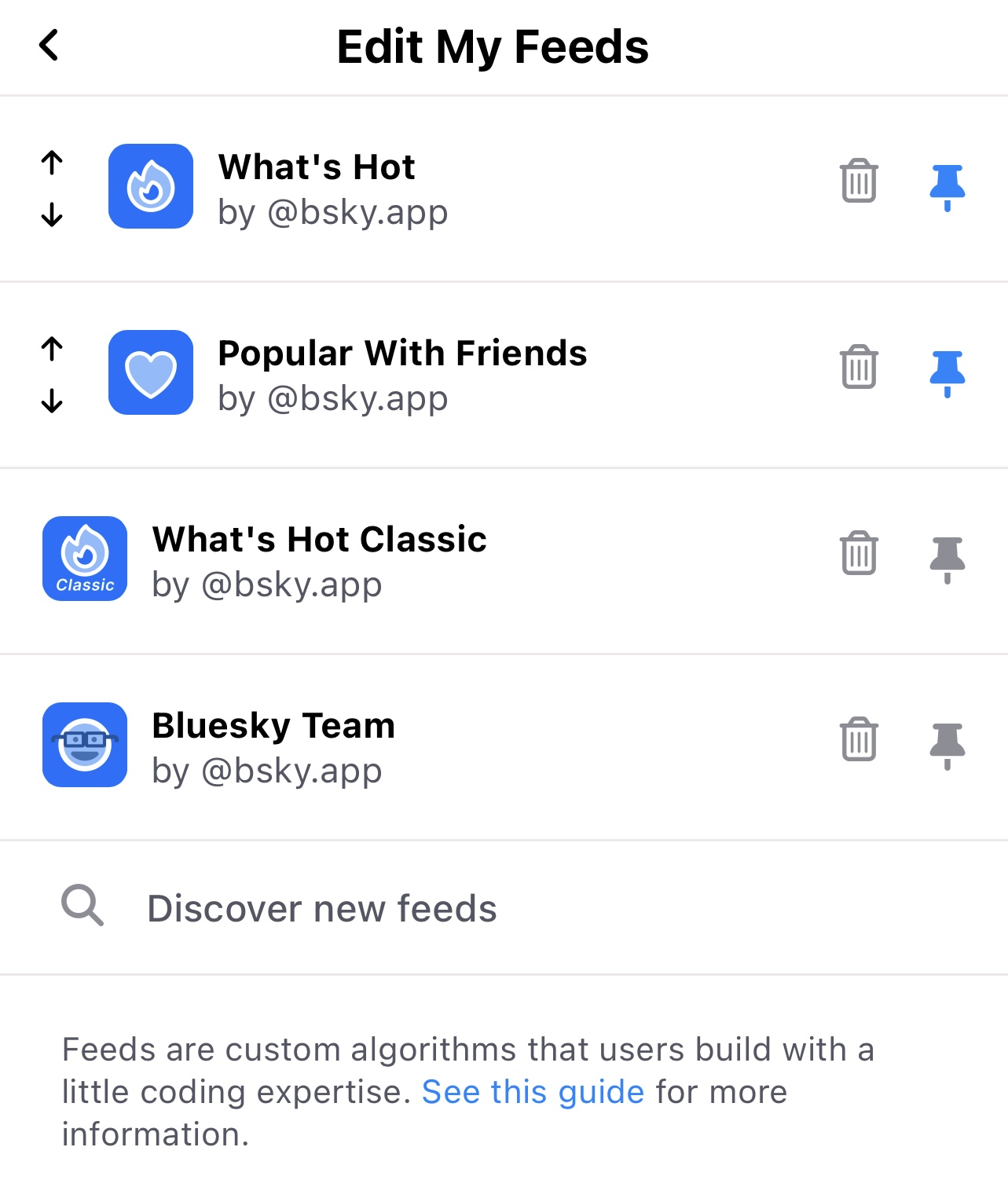 Screenshot from Bluesky, May 2023
Screenshot from Bluesky, May 2023This feed, created by the Bluesky team, shows updates from those you follow and the people they like.
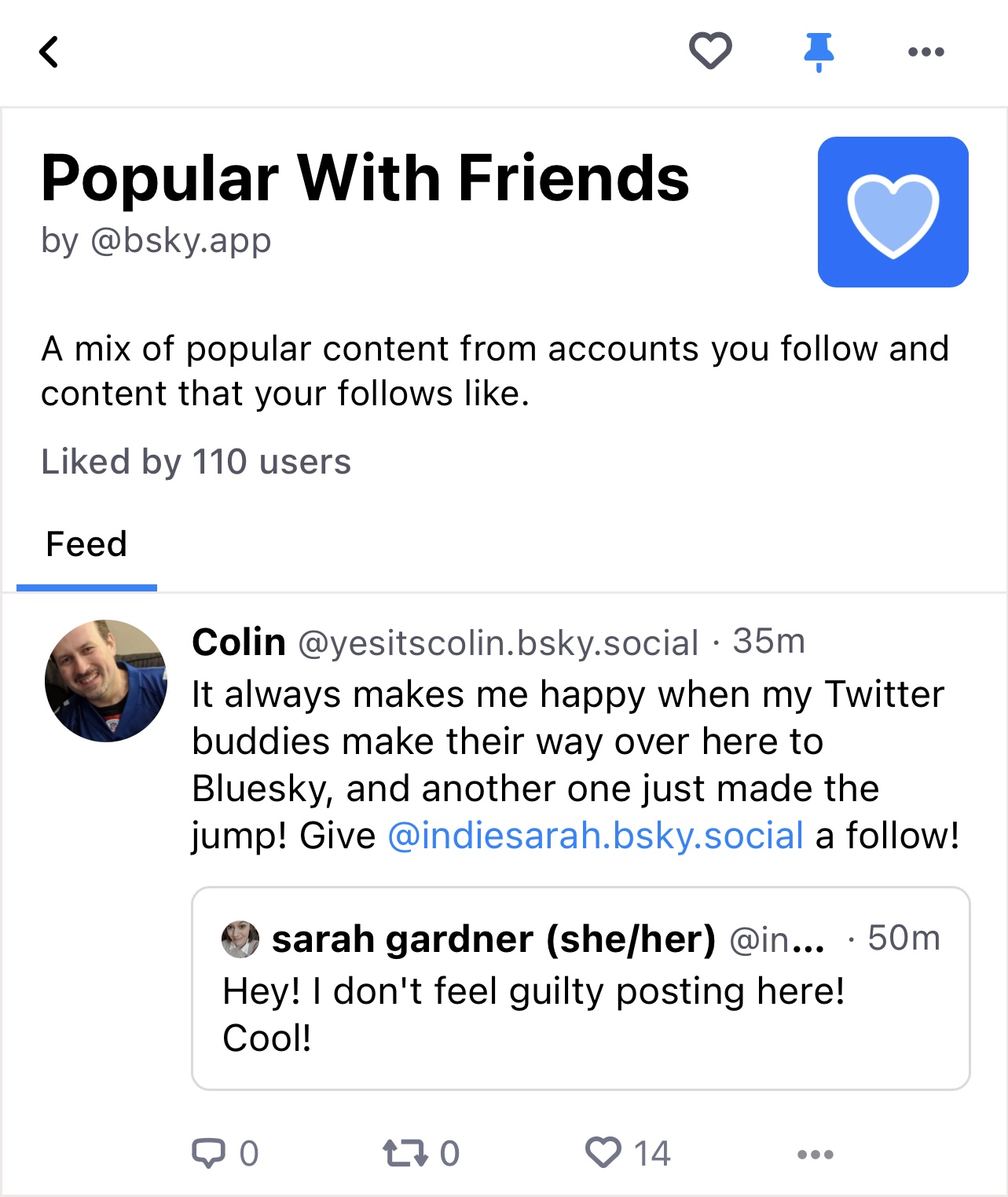 Screenshot from Bluesky, May 2023
Screenshot from Bluesky, May 2023How To Change Your Bluesky User Handle Or Domain
As mentioned, you can visit your account settings to change your user handle.
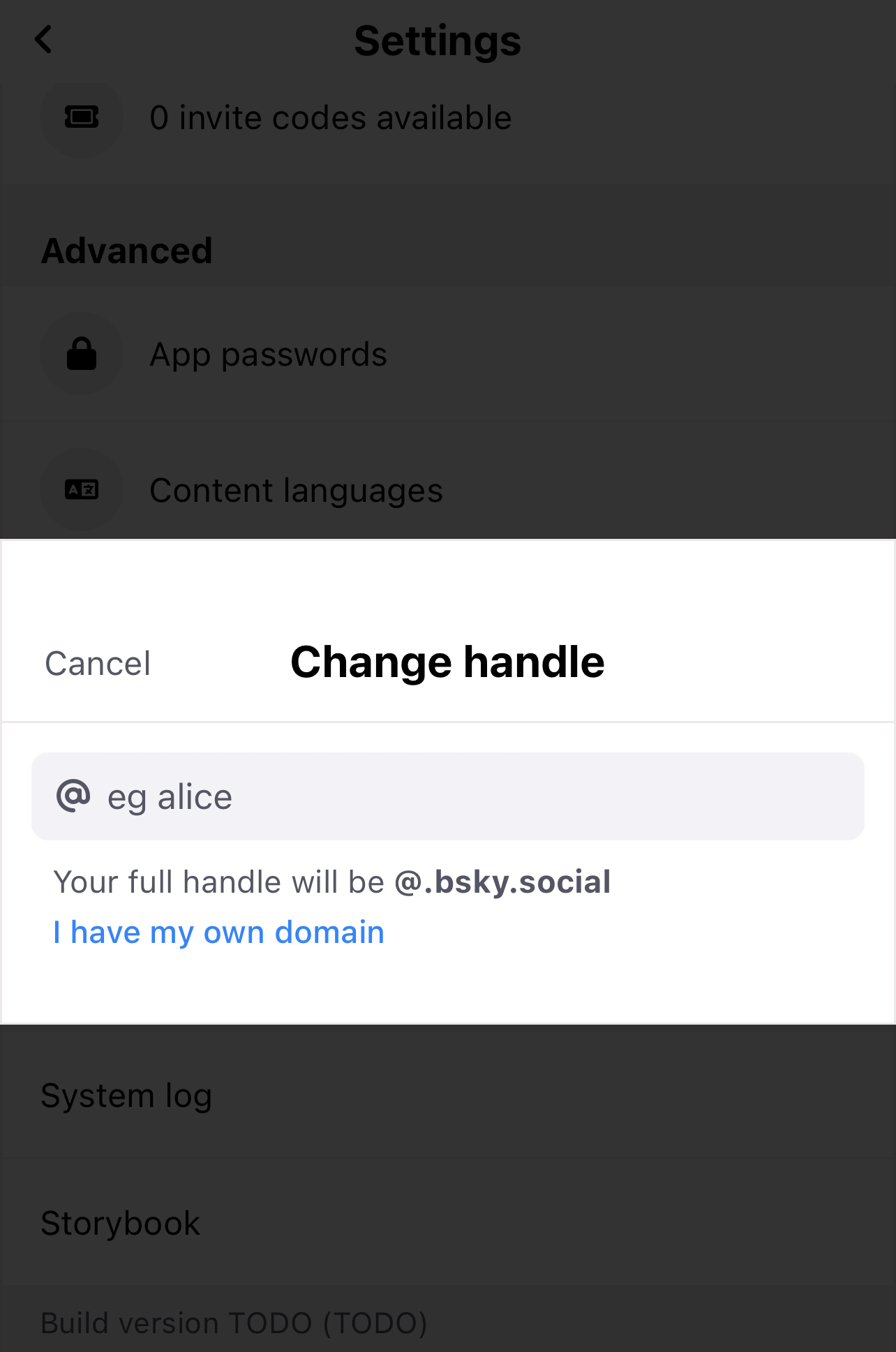 Screenshot from Bluesky, May 2023
Screenshot from Bluesky, May 2023You can also update your user handle to use your domain instead of @bsky.social.
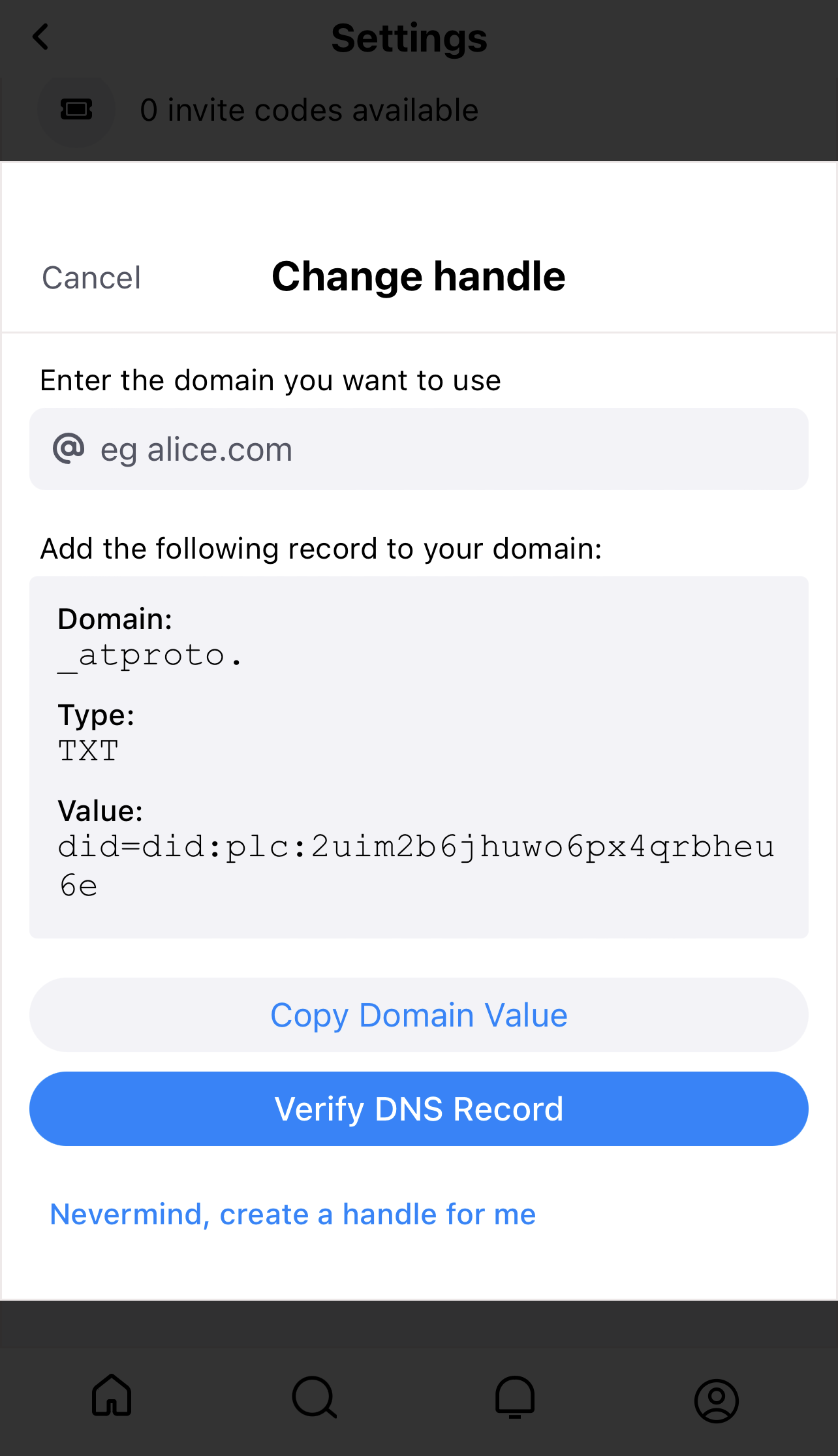 Screenshot from Bluesky, May 2023
Screenshot from Bluesky, May 2023The Next Step In Decentralized Social Media
Bluesky may present an approach to decentralized social media that could mitigate many issues plaguing traditional social platforms today.
Bluesky appears dedicated to ushering in a new digital communication era with the AT Protocol’s continued development.
With the issues it aims to solve and the open standard it seeks to establish, Bluesky could be the blueprint for the future of social media. It remains to be seen how well Bluesky will perform once it comes out of beta.
Featured image: Tada Images/Shutterstock
SEO
How To Write ChatGPT Prompts To Get The Best Results

ChatGPT is a game changer in the field of SEO. This powerful language model can generate human-like content, making it an invaluable tool for SEO professionals.
However, the prompts you provide largely determine the quality of the output.
To unlock the full potential of ChatGPT and create content that resonates with your audience and search engines, writing effective prompts is crucial.
In this comprehensive guide, we’ll explore the art of writing prompts for ChatGPT, covering everything from basic techniques to advanced strategies for layering prompts and generating high-quality, SEO-friendly content.
Writing Prompts For ChatGPT
What Is A ChatGPT Prompt?
A ChatGPT prompt is an instruction or discussion topic a user provides for the ChatGPT AI model to respond to.
The prompt can be a question, statement, or any other stimulus to spark creativity, reflection, or engagement.
Users can use the prompt to generate ideas, share their thoughts, or start a conversation.
ChatGPT prompts are designed to be open-ended and can be customized based on the user’s preferences and interests.
How To Write Prompts For ChatGPT
Start by giving ChatGPT a writing prompt, such as, “Write a short story about a person who discovers they have a superpower.”
ChatGPT will then generate a response based on your prompt. Depending on the prompt’s complexity and the level of detail you requested, the answer may be a few sentences or several paragraphs long.
Use the ChatGPT-generated response as a starting point for your writing. You can take the ideas and concepts presented in the answer and expand upon them, adding your own unique spin to the story.
If you want to generate additional ideas, try asking ChatGPT follow-up questions related to your original prompt.
For example, you could ask, “What challenges might the person face in exploring their newfound superpower?” Or, “How might the person’s relationships with others be affected by their superpower?”
Remember that ChatGPT’s answers are generated by artificial intelligence and may not always be perfect or exactly what you want.
However, they can still be a great source of inspiration and help you start writing.
Must-Have GPTs Assistant
I recommend installing the WebBrowser Assistant created by the OpenAI Team. This tool allows you to add relevant Bing results to your ChatGPT prompts.
This assistant adds the first web results to your ChatGPT prompts for more accurate and up-to-date conversations.
It is very easy to install in only two clicks. (Click on Start Chat.)
For example, if I ask, “Who is Vincent Terrasi?,” ChatGPT has no answer.
With WebBrower Assistant, the assistant creates a new prompt with the first Bing results, and now ChatGPT knows who Vincent Terrasi is.
 Screenshot from ChatGPT, March 2023
Screenshot from ChatGPT, March 2023You can test other GPT assistants available in the GPTs search engine if you want to use Google results.
Master Reverse Prompt Engineering
ChatGPT can be an excellent tool for reverse engineering prompts because it generates natural and engaging responses to any given input.
By analyzing the prompts generated by ChatGPT, it is possible to gain insight into the model’s underlying thought processes and decision-making strategies.
One key benefit of using ChatGPT to reverse engineer prompts is that the model is highly transparent in its decision-making.
This means that the reasoning and logic behind each response can be traced, making it easier to understand how the model arrives at its conclusions.
Once you’ve done this a few times for different types of content, you’ll gain insight into crafting more effective prompts.
Prepare Your ChatGPT For Generating Prompts
First, activate the reverse prompt engineering.
- Type the following prompt: “Enable Reverse Prompt Engineering? By Reverse Prompt Engineering I mean creating a prompt from a given text.”
 Screenshot from ChatGPT, March 2023
Screenshot from ChatGPT, March 2023ChatGPT is now ready to generate your prompt. You can test the product description in a new chatbot session and evaluate the generated prompt.
- Type: “Create a very technical reverse prompt engineering template for a product description about iPhone 11.”
 Screenshot from ChatGPT, March 2023
Screenshot from ChatGPT, March 2023The result is amazing. You can test with a full text that you want to reproduce. Here is an example of a prompt for selling a Kindle on Amazon.
- Type: “Reverse Prompt engineer the following {product), capture the writing style and the length of the text :
product =”
 Screenshot from ChatGPT, March 2023
Screenshot from ChatGPT, March 2023I tested it on an SEJ blog post. Enjoy the analysis – it is excellent.
- Type: “Reverse Prompt engineer the following {text}, capture the tone and writing style of the {text} to include in the prompt :
text = all text coming from https://www.searchenginejournal.com/google-bard-training-data/478941/”
 Screenshot from ChatGPT, March 2023
Screenshot from ChatGPT, March 2023But be careful not to use ChatGPT to generate your texts. It is just a personal assistant.
Go Deeper
Prompts and examples for SEO:
- Keyword research and content ideas prompt: “Provide a list of 20 long-tail keyword ideas related to ‘local SEO strategies’ along with brief content topic descriptions for each keyword.”
- Optimizing content for featured snippets prompt: “Write a 40-50 word paragraph optimized for the query ‘what is the featured snippet in Google search’ that could potentially earn the featured snippet.”
- Creating meta descriptions prompt: “Draft a compelling meta description for the following blog post title: ’10 Technical SEO Factors You Can’t Ignore in 2024′.”
Important Considerations:
- Always Fact-Check: While ChatGPT can be a helpful tool, it’s crucial to remember that it may generate inaccurate or fabricated information. Always verify any facts, statistics, or quotes generated by ChatGPT before incorporating them into your content.
- Maintain Control and Creativity: Use ChatGPT as a tool to assist your writing, not replace it. Don’t rely on it to do your thinking or create content from scratch. Your unique perspective and creativity are essential for producing high-quality, engaging content.
- Iteration is Key: Refine and revise the outputs generated by ChatGPT to ensure they align with your voice, style, and intended message.
Additional Prompts for Rewording and SEO:
– Rewrite this sentence to be more concise and impactful.
– Suggest alternative phrasing for this section to improve clarity.
– Identify opportunities to incorporate relevant internal and external links.
– Analyze the keyword density and suggest improvements for better SEO.
Remember, while ChatGPT can be a valuable tool, it’s essential to use it responsibly and maintain control over your content creation process.
Experiment And Refine Your Prompting Techniques
Writing effective prompts for ChatGPT is an essential skill for any SEO professional who wants to harness the power of AI-generated content.
Hopefully, the insights and examples shared in this article can inspire you and help guide you to crafting stronger prompts that yield high-quality content.
Remember to experiment with layering prompts, iterating on the output, and continually refining your prompting techniques.
This will help you stay ahead of the curve in the ever-changing world of SEO.
More resources:
Featured Image: Tapati Rinchumrus/Shutterstock
SEO
Measuring Content Impact Across The Customer Journey

Understanding the impact of your content at every touchpoint of the customer journey is essential – but that’s easier said than done. From attracting potential leads to nurturing them into loyal customers, there are many touchpoints to look into.
So how do you identify and take advantage of these opportunities for growth?
Watch this on-demand webinar and learn a comprehensive approach for measuring the value of your content initiatives, so you can optimize resource allocation for maximum impact.
You’ll learn:
- Fresh methods for measuring your content’s impact.
- Fascinating insights using first-touch attribution, and how it differs from the usual last-touch perspective.
- Ways to persuade decision-makers to invest in more content by showcasing its value convincingly.
With Bill Franklin and Oliver Tani of DAC Group, we unravel the nuances of attribution modeling, emphasizing the significance of layering first-touch and last-touch attribution within your measurement strategy.
Check out these insights to help you craft compelling content tailored to each stage, using an approach rooted in first-hand experience to ensure your content resonates.
Whether you’re a seasoned marketer or new to content measurement, this webinar promises valuable insights and actionable tactics to elevate your SEO game and optimize your content initiatives for success.
View the slides below or check out the full webinar for all the details.
SEO
How to Find and Use Competitor Keywords

Competitor keywords are the keywords your rivals rank for in Google’s search results. They may rank organically or pay for Google Ads to rank in the paid results.
Knowing your competitors’ keywords is the easiest form of keyword research. If your competitors rank for or target particular keywords, it might be worth it for you to target them, too.
There is no way to see your competitors’ keywords without a tool like Ahrefs, which has a database of keywords and the sites that rank for them. As far as we know, Ahrefs has the biggest database of these keywords.
How to find all the keywords your competitor ranks for
- Go to Ahrefs’ Site Explorer
- Enter your competitor’s domain
- Go to the Organic keywords report
The report is sorted by traffic to show you the keywords sending your competitor the most visits. For example, Mailchimp gets most of its organic traffic from the keyword “mailchimp.”


Since you’re unlikely to rank for your competitor’s brand, you might want to exclude branded keywords from the report. You can do this by adding a Keyword > Doesn’t contain filter. In this example, we’ll filter out keywords containing “mailchimp” or any potential misspellings:


If you’re a new brand competing with one that’s established, you might also want to look for popular low-difficulty keywords. You can do this by setting the Volume filter to a minimum of 500 and the KD filter to a maximum of 10.


How to find keywords your competitor ranks for, but you don’t
- Go to Competitive Analysis
- Enter your domain in the This target doesn’t rank for section
- Enter your competitor’s domain in the But these competitors do section


Hit “Show keyword opportunities,” and you’ll see all the keywords your competitor ranks for, but you don’t.


You can also add a Volume and KD filter to find popular, low-difficulty keywords in this report.


How to find keywords multiple competitors rank for, but you don’t
- Go to Competitive Analysis
- Enter your domain in the This target doesn’t rank for section
- Enter the domains of multiple competitors in the But these competitors do section


You’ll see all the keywords that at least one of these competitors ranks for, but you don’t.


You can also narrow the list down to keywords that all competitors rank for. Click on the Competitors’ positions filter and choose All 3 competitors:


- Go to Ahrefs’ Site Explorer
- Enter your competitor’s domain
- Go to the Paid keywords report


This report shows you the keywords your competitors are targeting via Google Ads.
Since your competitor is paying for traffic from these keywords, it may indicate that they’re profitable for them—and could be for you, too.
You know what keywords your competitors are ranking for or bidding on. But what do you do with them? There are basically three options.
1. Create pages to target these keywords
You can only rank for keywords if you have content about them. So, the most straightforward thing you can do for competitors’ keywords you want to rank for is to create pages to target them.
However, before you do this, it’s worth clustering your competitor’s keywords by Parent Topic. This will group keywords that mean the same or similar things so you can target them all with one page.
Here’s how to do that:
- Export your competitor’s keywords, either from the Organic Keywords or Content Gap report
- Paste them into Keywords Explorer
- Click the “Clusters by Parent Topic” tab


For example, MailChimp ranks for keywords like “what is digital marketing” and “digital marketing definition.” These and many others get clustered under the Parent Topic of “digital marketing” because people searching for them are all looking for the same thing: a definition of digital marketing. You only need to create one page to potentially rank for all these keywords.


2. Optimize existing content by filling subtopics
You don’t always need to create new content to rank for competitors’ keywords. Sometimes, you can optimize the content you already have to rank for them.
How do you know which keywords you can do this for? Try this:
- Export your competitor’s keywords
- Paste them into Keywords Explorer
- Click the “Clusters by Parent Topic” tab
- Look for Parent Topics you already have content about
For example, if we analyze our competitor, we can see that seven keywords they rank for fall under the Parent Topic of “press release template.”


If we search our site, we see that we already have a page about this topic.


If we click the caret and check the keywords in the cluster, we see keywords like “press release example” and “press release format.”


To rank for the keywords in the cluster, we can probably optimize the page we already have by adding sections about the subtopics of “press release examples” and “press release format.”
3. Target these keywords with Google Ads
Paid keywords are the simplest—look through the report and see if there are any relevant keywords you might want to target, too.
For example, Mailchimp is bidding for the keyword “how to create a newsletter.”


If you’re ConvertKit, you may also want to target this keyword since it’s relevant.
If you decide to target the same keyword via Google Ads, you can hover over the magnifying glass to see the ads your competitor is using.


You can also see the landing page your competitor directs ad traffic to under the URL column.


Learn more
Check out more tutorials on how to do competitor keyword analysis:
-

 PPC5 days ago
PPC5 days ago19 Best SEO Tools in 2024 (For Every Use Case)
-
SEARCHENGINES7 days ago
Daily Search Forum Recap: April 17, 2024
-
SEARCHENGINES6 days ago
Daily Search Forum Recap: April 18, 2024
-
SEARCHENGINES5 days ago
Daily Search Forum Recap: April 19, 2024
-

 MARKETING6 days ago
MARKETING6 days agoEcommerce evolution: Blurring the lines between B2B and B2C
-

 SEO6 days ago
SEO6 days ago2024 WordPress Vulnerability Report Shows Errors Sites Keep Making
-

 WORDPRESS5 days ago
WORDPRESS5 days agoHow to Make $5000 of Passive Income Every Month in WordPress
-

 WORDPRESS6 days ago
WORDPRESS6 days ago10 Amazing WordPress Design Resouces – WordPress.com News














